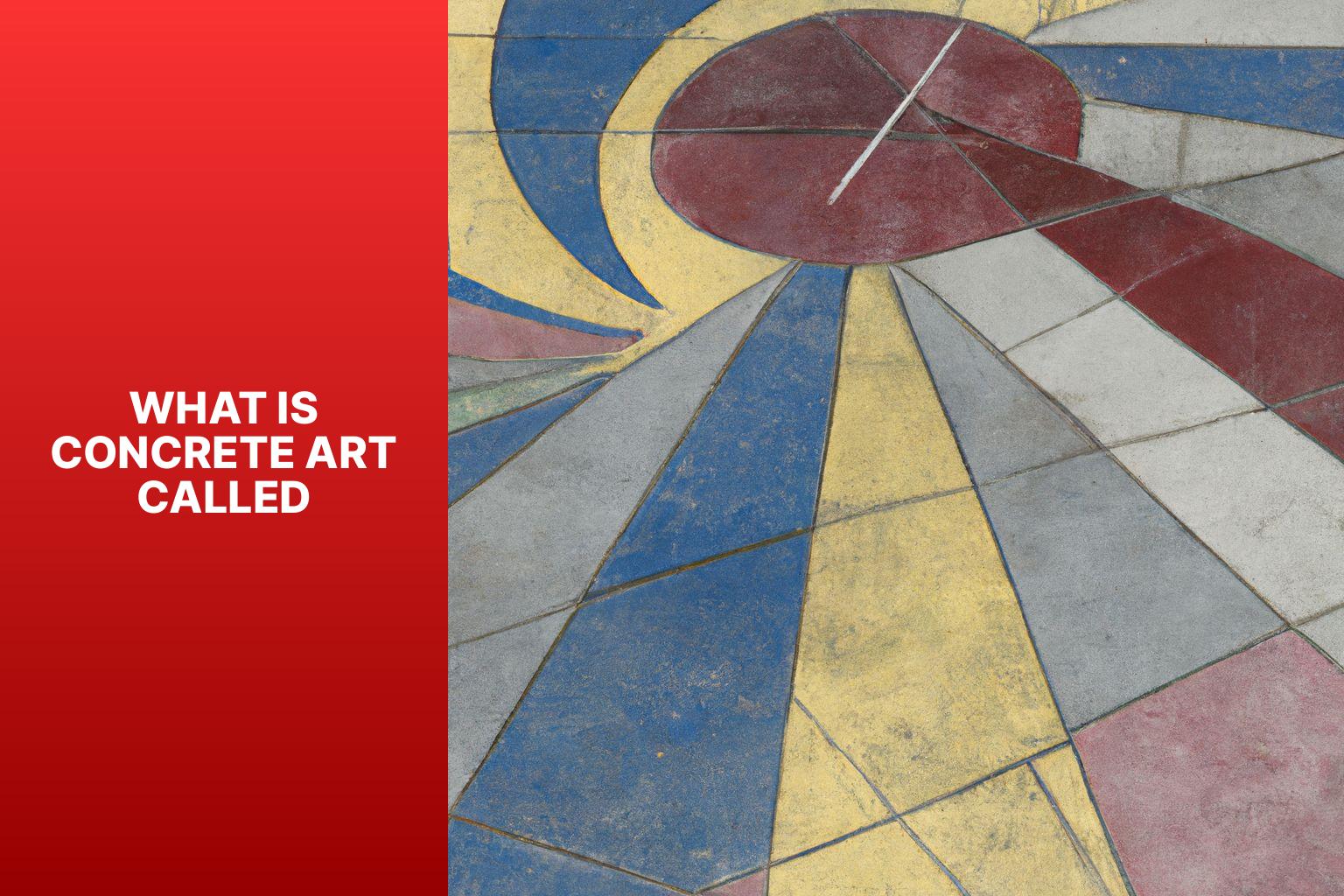What Is Concrete Art Called?
Exploring Concrete Art: A Journey into Geometric Abstraction
Concrete art, an exquisite form of artistic expression that emerged in the early 20th century, stands as a testament to the power of simplicity and precision in the world of visual creativity.
This captivating style centers its focus on fundamental geometric shapes and forms, masterfully arranged to create compositions that draw the eye and inspire contemplation.

Unveiling the Genesis and Essence of Concrete Art
Origins and Evolution
At the dawn of the 1900s, a post-World War I era characterized by shifts in perspective and artistic ideologies, concrete art made its inaugural appearance. Shaped by the influences of movements like De Stijl and Constructivism, this form of art evolved as a response to the turbulence of its time.
Notable figures like Theo van Doesburg and Max Bill played pivotal roles in nurturing and propagating the ethos of concrete art. However, it was the ingenious Dutch artist Piet Mondrian who took the helm as a pioneer, his geometric abstractions laying the groundwork for the genre's principles.
The Canvas of Concrete Art: Characteristics and Tenets
Geometry in its Purest Form
Central to the allure of concrete art is its adherence to geometric abstraction. Clean lines intersect with immaculate shapes, creating a visual symphony that transcends the confines of representation.
Stripped of the need to depict familiar objects or figures, concrete art navigates the realm of pure form. This non-objective approach serves as a distinctive hallmark, setting it apart from its abstract counterparts.
Colors that Illuminate
A rich palette dominated by primary colors, augmented by the stark contrast of black and white, defines the visual language of concrete art. These vibrant hues play harmoniously upon the canvas, enhancing the impact of geometric arrangements and enriching the visual experience.
The Absence of Symbolism
Where traditional art often hinges on symbolism and representation, concrete art remains resolutely devoid of such associations. It stands as an embodiment of objectivity, inviting viewers to engage with the artwork on a plane untethered to prior conceptions or symbolism. This artistic purity empowers audiences to appreciate the interplay of shapes, colors, and spaces without the interference of external narratives.
Concrete Art in the Limelight: A Glimpse into Its Influence
Parisian Spotlight: Abstract-Création Exhibition
The year 1936 witnessed a pivotal moment in the trajectory of concrete art. The "Abstract-Création" exhibition, hosted in the artistic heartland of Paris, cast a global spotlight on abstract artworks, including the realm of concrete art. This event not only elevated these innovative practices to the forefront of modern art history but also solidified their relevance in the evolving artistic landscape.
FAQ: Unveiling Concrete Art's Nuances
Q1: What sets concrete art apart from other artistic styles?
Concrete art stands apart through its steadfast commitment to geometry, color, and form. Unlike traditional representation or even abstract art, concrete art is void of symbolism, challenging viewers to immerse themselves in the aesthetics of shape and color without the crutch of recognizable subjects.
Q2: Who were the key proponents of concrete art?
Among the trailblazers of concrete art, the Dutch luminary Piet Mondrian shines as a beacon. His geometric marvels, suffused with primary colors and balanced arrangements, remain emblematic of the genre's principles.
Q3: How does concrete art evoke emotions without recognizable imagery?
Concrete art's power lies in its ability to stir emotions through its meticulous compositions. By employing geometry and color, it crafts an intricate visual language that resonates with viewers, prompting introspection and sparking dialogues about art's innate capacity to evoke sentiments.
Eminent Pioneers of Concrete Art
Pioneers of Precision: Celebrating Concrete Art Visionaries
To gain a profound understanding of the luminaries who have shaped and defined the landscape of concrete art, we delve into the section devoted to "Famous Concrete Artists."
This exploration invites you to traverse the captivating works and celebrated accomplishments of those who have breathed life into the world of geometric abstraction.

